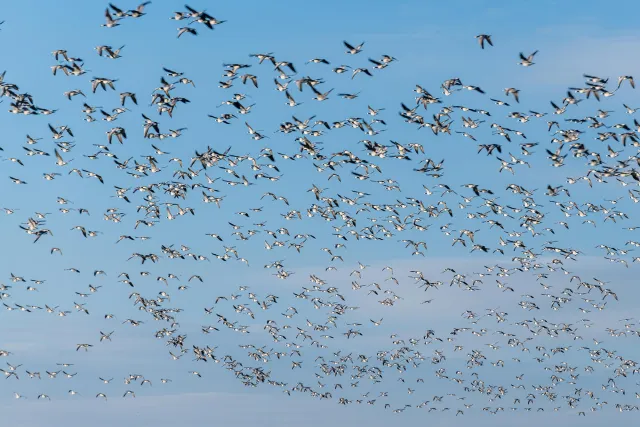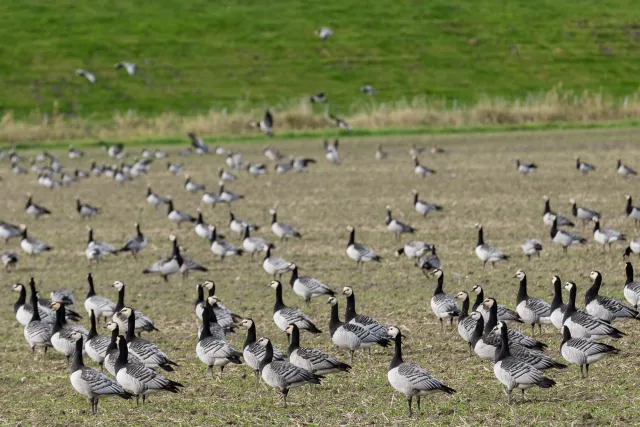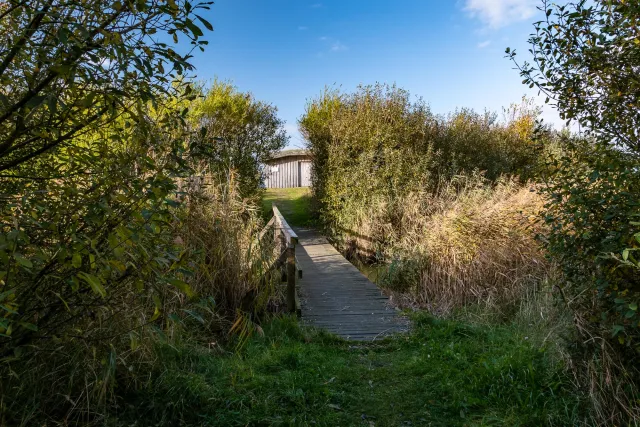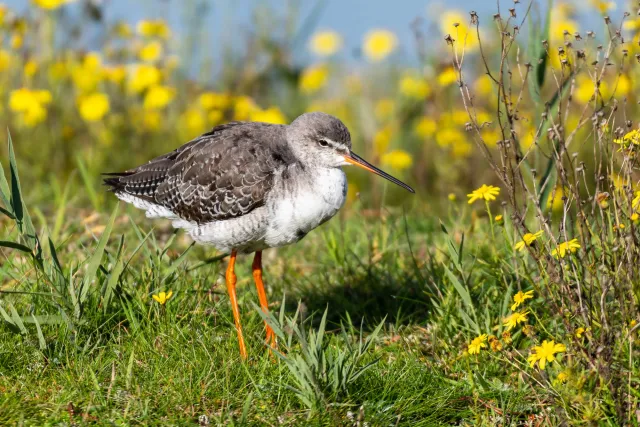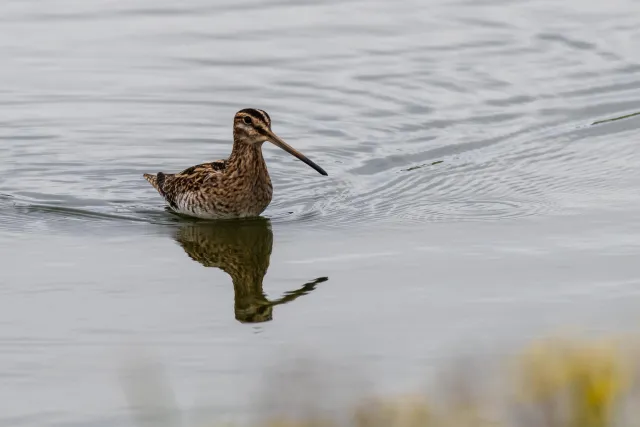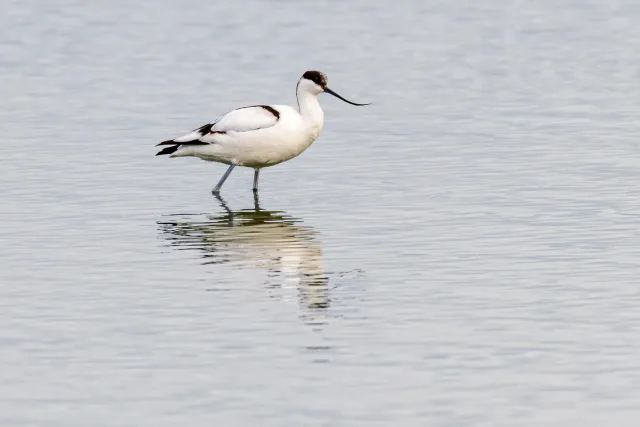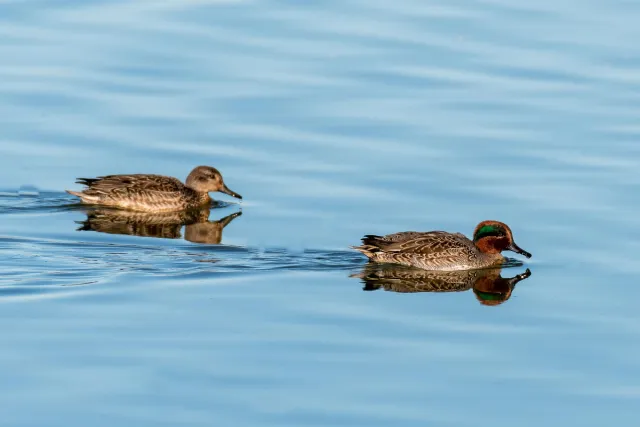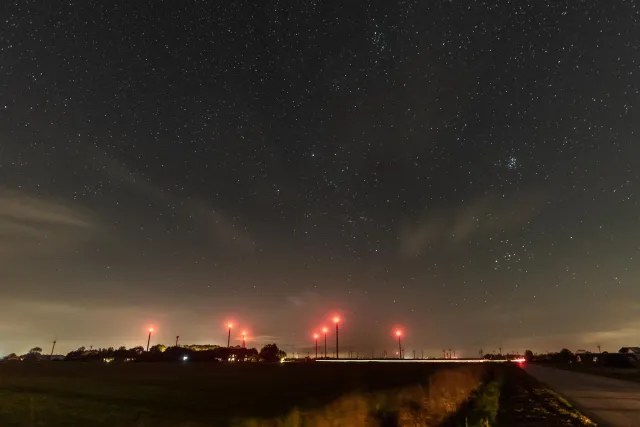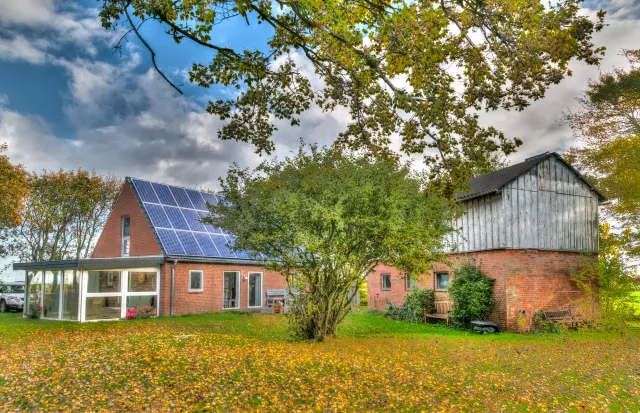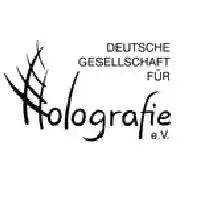The fields around the Beltringharder Koog nature reserve attract special guests in October: Huge flocks of barnacle geese then darken the sky with their black silhouettes and, after landing, transform the ground into black and white paintings almost in the style of pointilism. Even if you can hardly get enough of the goose spectacle, the two observation stations on the connecting dam between Cecilienkoog and the outer dike offer excellent opportunities to observe both known and rare bird species. We didn't see the Red-necked phalarope, which was on everyone's lips, but we did see the bearded tit, which was named as a local attraction. In general, the communication in and at the observation stations among the visitors is remarkable - tips on current observations or explanations are received in a friendly manner if one is unsure about the bird species photographed.
At first, however, we hardly wanted to believe the story of the local sea eagles, which was so experienced. But suddenly all the birds observed rose into the air during a visit and in the far distance we saw the reason in the form of two points in the sky - the sea eagle pair put the bird world of the Beltringhard biotopes in a mood of panic for a short time, until it finally moved north. We were curious to find out more details about the sea eagles that breed in the nearby Drelsdorf Forest and fly from there via the so-called Eagle Way to the North Sea. This also means that wind turbines of the community wind farm Reußenköge at the nature reserve on this route cease to operate during the known eagle flight times. As long as current studies do not yet clearly prove or invalidate a possible risk to eagles from the rotors of wind turbines, this regulation will remain in place.
Incidentally, this wind farm produces around 140 MWp and is a particularly beautiful example of how future-oriented projects of general benefit are created under the direction of locals. The first photovoltaic systems are already being set up here to produce the green electricity for the production of hydrogen for vehicles with fuel cells, while in the lignite world in North Rhine-Westphalia investments are still being made in technology that is being phased out and environmentally harmful. But the current success of the Frisian wind power plants also required a long start-up with a lot of perseverance on the part of those involved. For example, in 1983 in the March issue of the idea - the magazine for engineers, I published an article on wind power with the title Renaissance of the Windmill after I (at that time as a specialist editor) on the 150 meter high Growian, a 3 MW wind turbine in Kaiser-Wilhelm-Koog had researched. My résumé at the time: "Wind power technology must be advanced quickly - but please not only with wind turbines as high as Cologne Cathedral". Now, after 37 years, it seems to be slowly moving in the desired direction (ignoring the Bavarian delays in the construction of the high-voltage road from north to south ..).
By the way, on July 12, 1983, I also visited the opening of the Pellworm solar power plant. The power plant delivered 300 kWp and used special lead batteries as energy storage in order to continuously supply the Pellworm spa center with energy. The commissioning was a good occasion to publish an article with the heading solar technology - power plant sun in the August issue `83 of the idea - but it was already 37 lignite years ago in NRW ...).
If you want to experience the nature reserve Beltringharder Koog up close and (almost) on site, we recommend e.g. Haus Beltringharde, Reußenköge, which can be booked through the Ferien an der Nordsee agency or Booking.com. If you manage to stay here, you can see the goose spectacle from the window, experience wonderful sunsets on the Vordeich 200 meters away and you can be at the observation points in the nature reserve in 5 minutes. We were lucky and were able to start many interesting photo projects for a week from the modern house.


